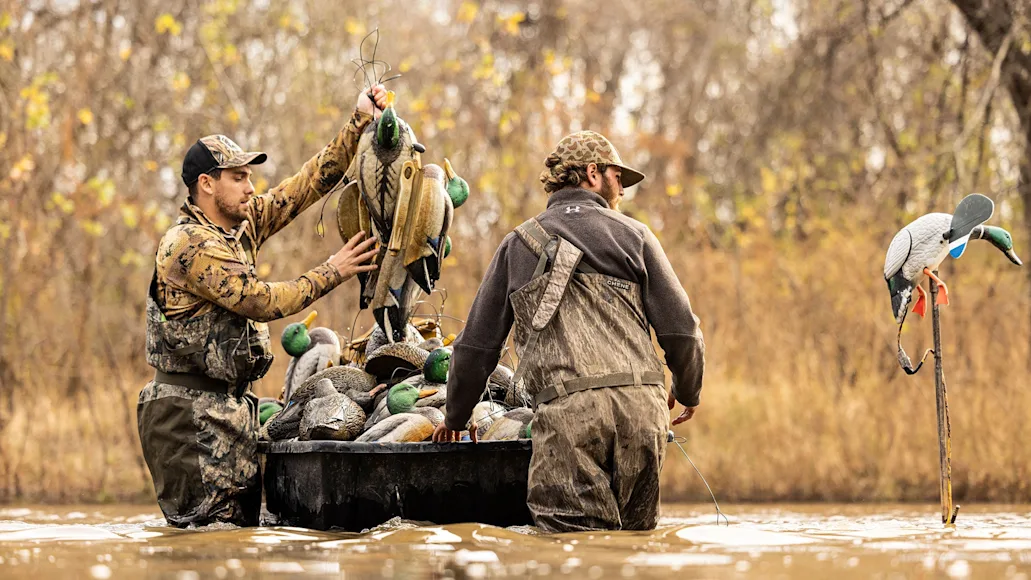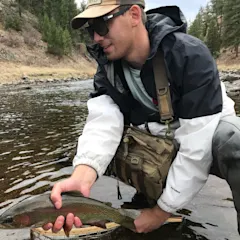IT’S 5 A.M. IN SUMNER, MISSOURI, and the moon is blood red. A lunar eclipse. As we ride out to the morning hunt, I can barely see my hand in front of me—just enough to see that it’s shaking a little from excitement. It’s only my second season of waterfowling, and I’m about to hunt the North American mecca for duck hunting—Habitat Flats
.
“We’re going to a timber hole,” says owner Tony Vandemore from the driver’s seat of the side-by-side. Polaris organized the trip, and we’re in a plush new 2023 Ranger Crew XP 1000 NorthStar
, buzzing down a dirt road that I’m hoping will lead to the best duck hunt of my life. Vandemore, a former professional baseball player who started Habitat Flats in 2007, is one of the country’s best-known duck hunters, and his lodge is among the most highly regarded in the country.
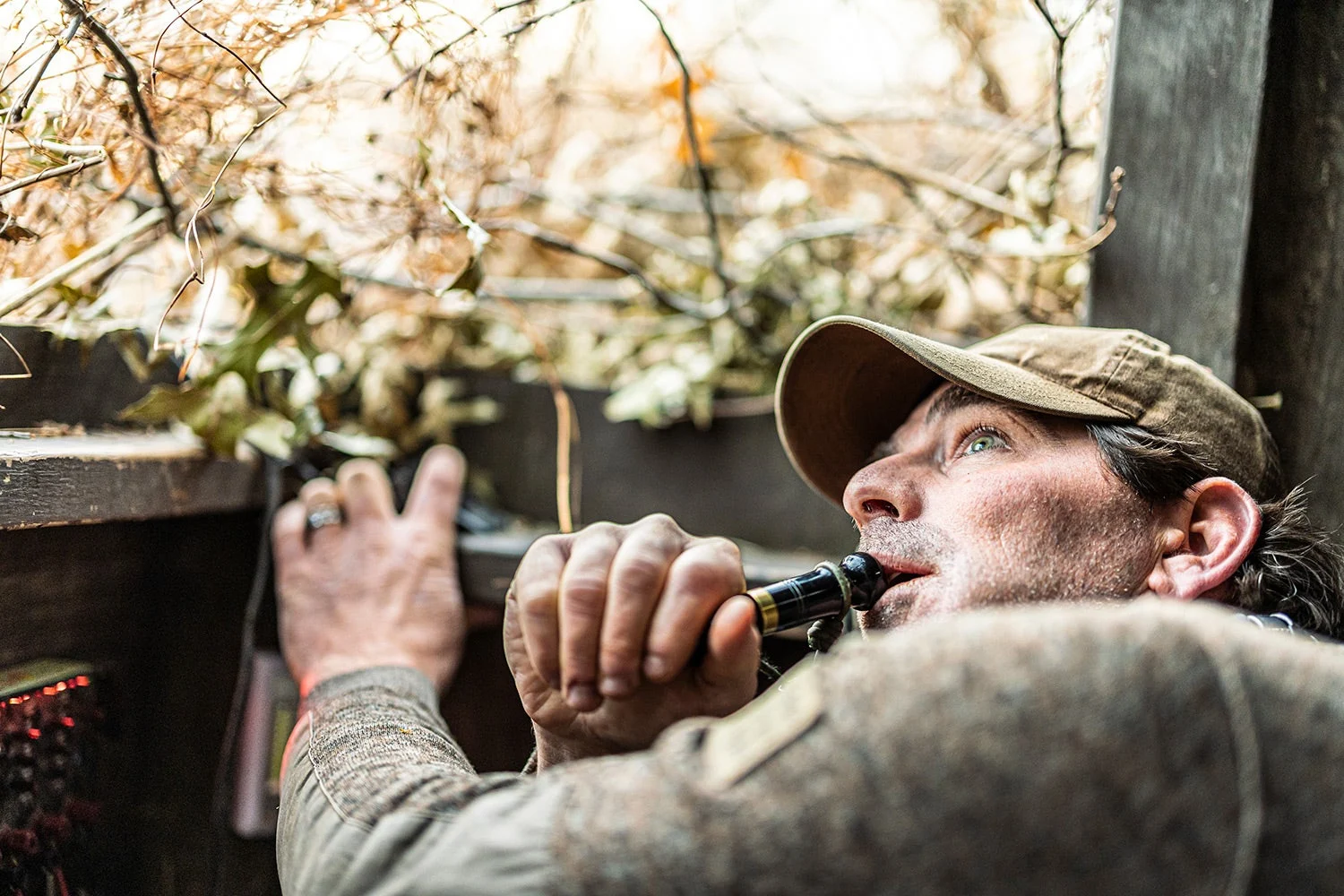
Habitat Flats owner Tony Vandemore works a flock of mallards circling the decoy spread. Nate Stroup / Polaris
At the edge of a large, flooded cornfield, Vandemore stops, rolls down the vehicle’s window, and kills the engine. Out in the darkness, we hear thousands of birds chuckling. “This is where they feed,” he says. “There won’t be any ducks where we’re going right now to hunt. It’s a traffic spot. We’ll be between where they’re eating and where they want to sleep, and they’ll just be going back and forth. There will never be a bird sitting there on its own.” It doesn’t make a lot of sense to me at first, but it doesn’t dampen my hopes any, either.
We get to the small pond, which is tucked into a pocket of wind-stripped oak and hickory trees. Vandemore is right. There aren’t any ducks here. Not yet. But I can already see dark bunches forming in the pale sky as they trade between the flooded corn and Swan Lake National Wildlife Refuge. Tony and the guides put out decoys, as two other hunters and I tuck into the blind. Soon, Vandemore takes the spot next to me and pours a cup of coffee from his thermos. My knee quivers and my foot taps against the wood floor as we watch the sky.
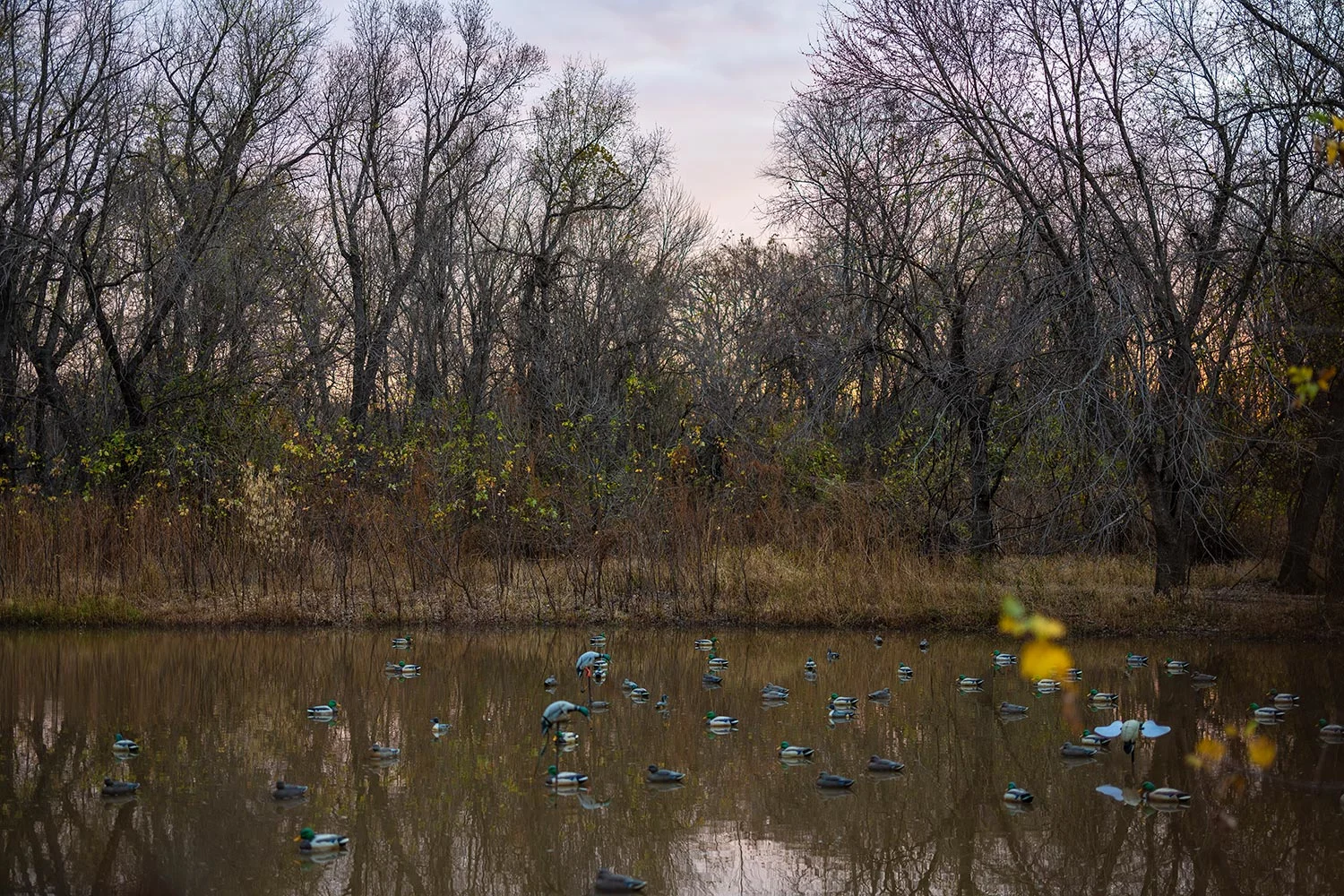
The setup for a morning traffic hunt on a small pond in the timber. Nate Stroup / Polaris
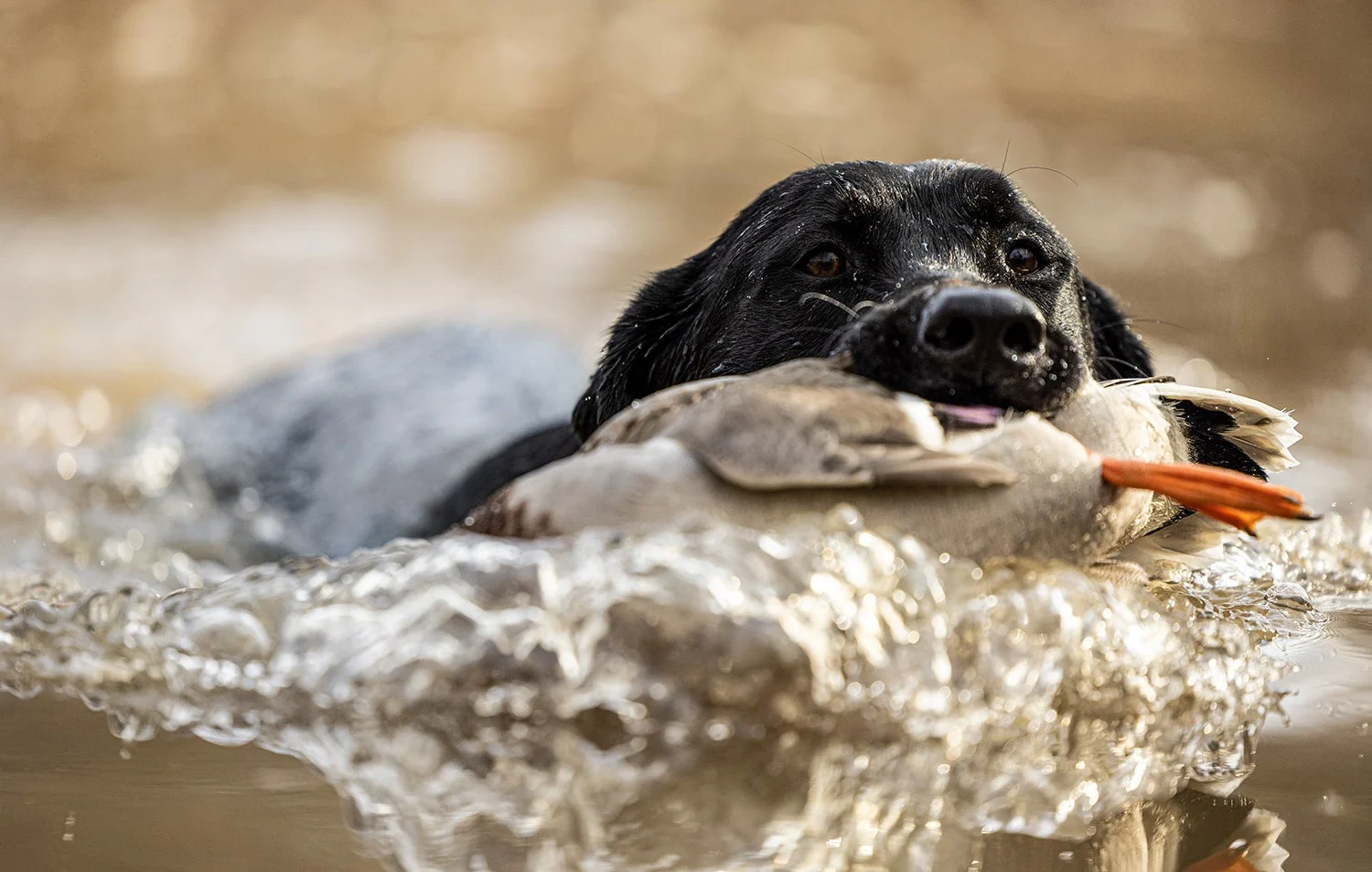
One of the guide’s labs retrieves a drake mallard. Nate Stroup / Polaris
It takes a little while. Long enough for me to worry a touch, but then a bunch of mallards cup their wings just after cresting the treetops. They drop, circle once, twice, and then finish from behind the blind, right in the middle of the spread—and pretty soon we’re admiring our first ducks taken at Habitat Flats.
Through the course of the morning, and over the next couple of days, I got to press Vandemore on what makes this place so special, what tactics work best for him and his guides, and what hunters at home can do to ensure great hunting on their own places. Here’s what I learned.
It All Starts With Habitat
It should come as no surprise that habitat is the key component of Habitat Flats—or that it was the impetus that got the whole place started. Back in mid 2000s, Vandemore and several neighbors started working together to improve the local land for waterfowl by flooding fields and promoting native moist-soil vegetation. Soon, they were putting so much time and money into habitat management that they looked for a way to defray the costs. They offered a few guided hunts the first season—and the rest, as Vandemore says, is history.
Today, the Home Lodge at Habitat Flats offers exclusive access to thousands of acres of flooded habitat and more than 50 blinds to hunt from. Vandemore prides himself on “farming for ducks,” and commonly says that hunting season is his “vacation” because the real work is habitat management in the off season. He’s made an art of flooding his fields at the perfect time, providing enough food to hold birds throughout the season, and managing pressure so that they need to go elsewhere to find good habitat to rest in.
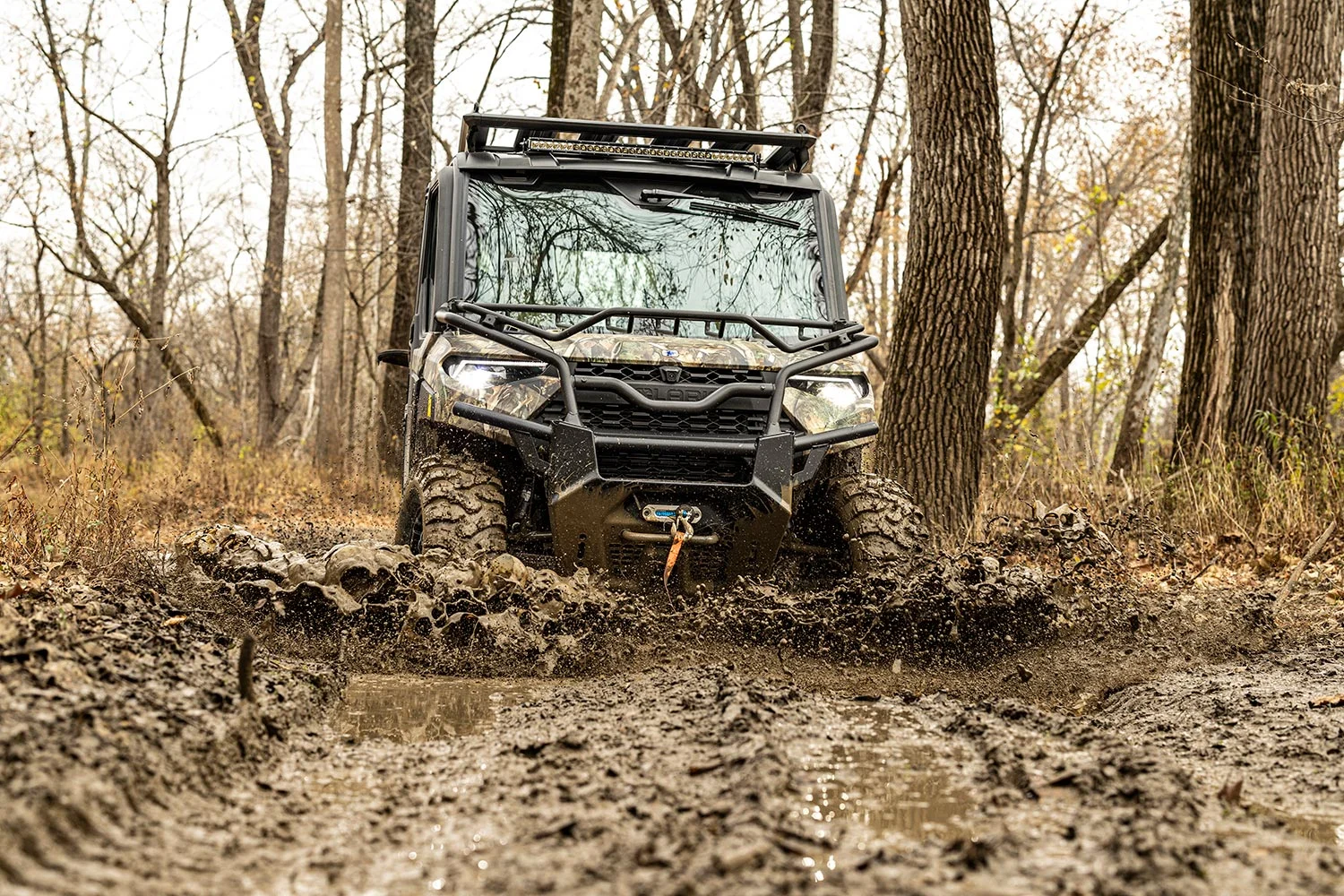
Hunters navigate the muddy bottoms of Habitat Flats in a Polaris Ranger Crew XP 1000 NorthStar
. Nate Stroup / Polaris
As a novice duck hunter, I have a hard time comprehending the scale of habitat management here. Yet, according to Vandemore, it’s something almost every hunter can do. “The easiest thing someone can do to improve habitat is promote good, natural moist-soil vegetation—your millet, smartweed, and panicum,” he says. “You can do that just by taking your water off at the right time of the year. The earlier you take it off, the more you’ll grow woodier vegetation, like smartweed. The later you take it off, the more grasses you get, like millet and panicum. That doesn’t cost anything.”
“Of course, not everyone has a marsh they can do that on,” he says. “So, maybe you get permission to sow some millet around the mudflats of a private pond. A bag of millet costs about $50 bucks. There are a lot of little things you can do to improve habitat. Every place you hunt could be a little bit better.”
How to Hunt a Timber Hole
The pond I hunted with Vandemore was unlike any other waterfowling spots I’ve been to, which were mostly large, open marshes. Habitat Flats has some blinds on that kind of habitat, but Vandemore prefers to hunt small ponds in the timber. “This isn’t like the beautiful green timber in Arkansas. This is just a pond or old slough in the woods,” he explains. “You’ll never see a duck on them naturally. It’s just really rewarding to totally fool them and bring them into a place they don’t want to be. I love it.”
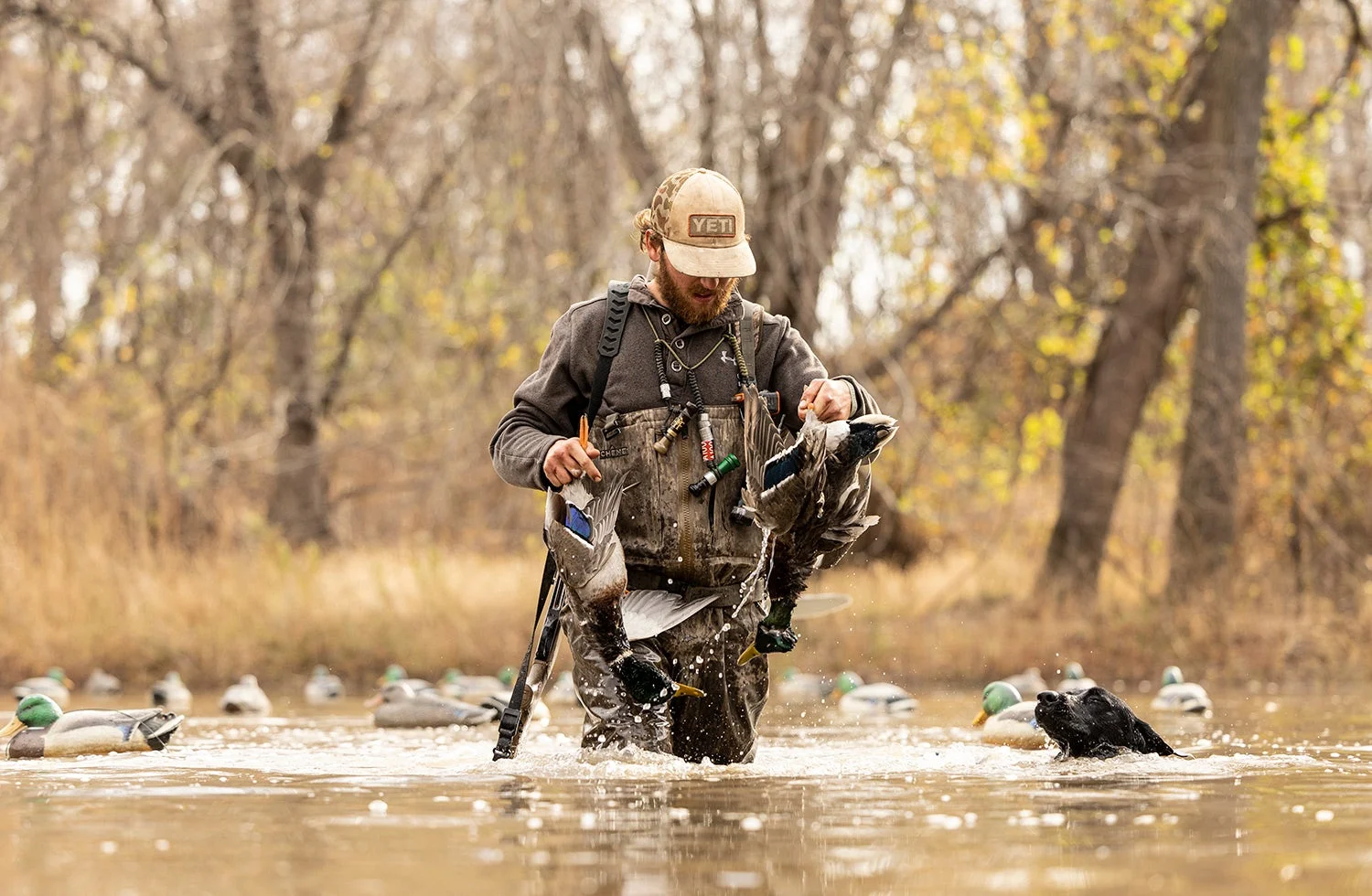
One of the guides at Habitat Flats picks up a pair of downed drakes. Nate Stroup / Polaris
The other reason Vandemore likes hunting timber is because groups of ducks tend to hold together better. Instead of shooting at singles and doubles peeling off from the flock, we got several chances at large groups of mallards, which isn’t something I’ve experienced elsewhere—and it is exhilarating. I wanted to know how to replicate this kind of hunt somewhere else.
“To have a good traffic hunt, the biggest thing is to know you’re not going to kill every duck you see,” he says. “Therefore, you want to have a lot of birds over you. The more birds over you, the higher your percentages are. If you set up in a spot where you might get one flock coming over you, you’d better do really well with that one flock. If you set up in a place where you have 30 flocks flying over you and you get three good flocks to come in, you’re better off. We call them ‘lines’—getting under a line they’re traveling.”
Adjust Your Calling
Vandemore and our guides, Rylan and Matt, called more aggressively than anyone I’ve ever hunted with. I was leery of the approach at first, but as the morning progressed, they were regularly working big groups of ducks—and eventually pulled in enough for three hunters to limit on mallards, with some bonus widgeon and teal mixed in, by 10 a.m.
“For a traffic spot like this, you want to be loud and aggressive to get ducks’ attention right away,” explains Vandemore. “Then you’ve got to back off and work them—get soft, hit them on the corners when they’re coming. That’s the approach I take. If you need to, you can ramp it back up to keep them interested.”
Vandemore emphasized that his approach to duck calling is not set in stone. “Every day is different when you’re calling ducks. You have to read the birds first and foremost,” he says. “When I hunt the places where they’re feeding, like flooded corn, I’ll not call a whole lot and keep it really soft. I just try to sound real natural.” In a traffic spot, however, he recommends being much more aggressive.
Focus on Soft Birds
During a lull in the action, Vandemore turned to me and said, “We just need some soft birds to fly by, and we’ll be good.” I didn’t know what he meant and asked him to elaborate.
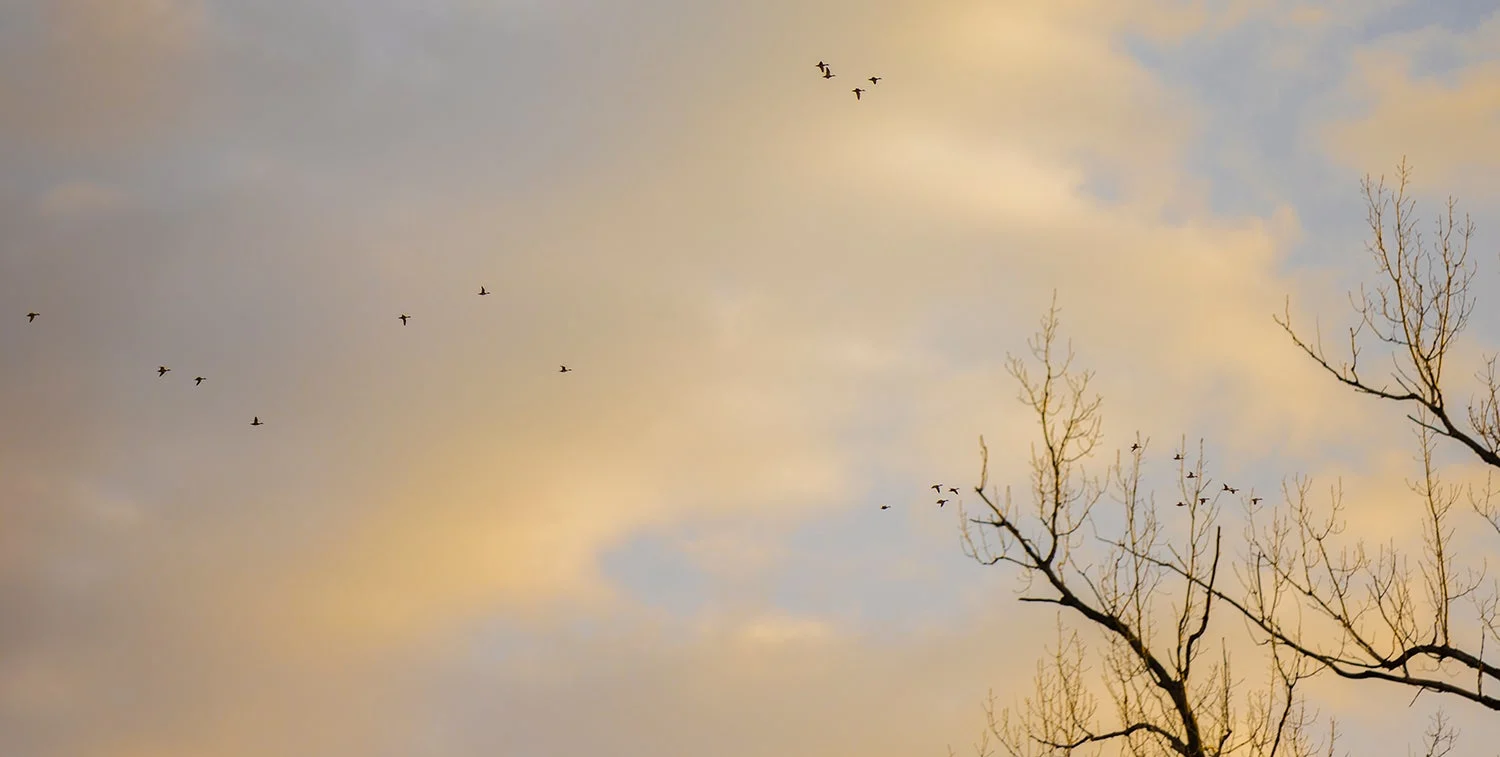
Vandemore looks for “soft” birds—ones that seem to be looking for a place to rest. Nate Stroup / Polaris
“Some ducks are super high and flying fast. They’re going from point A to point B. You can just tell they’re on a mission,” he said. “Softer ducks are flying a bit slower, just kind of loafing. You can see their heads moving from side to side, as if looking for a place to rest. They look a lot friendlier and are often a bit lower.”
Those are the ducks Vandemore focused on, and it worked. Often after catching the attention of one bird in a flock, he could get the rest to follow. “Softer ducks often have just eaten and have a full craw,” he says. “Those ducks are the ones that you call at. When I see one cup its wings, that’s the one I focus on from there on out.”
Weather Is Important—But It’s Not Everything
The morning we hunted together was windless, and temperatures rose into the 70s. That’s not ideal for duck hunting in Missouri in November. Every morning, Vandemore checks several weather apps to help his crew fine-tune that day’s approach. In our case, he thought it was crucial for us to be ready right at shooting time. “When you get a warm-up like this one with a full moon, there’s a lot of action early and late,” he says. “The ducks kind of go a bit nocturnal.”
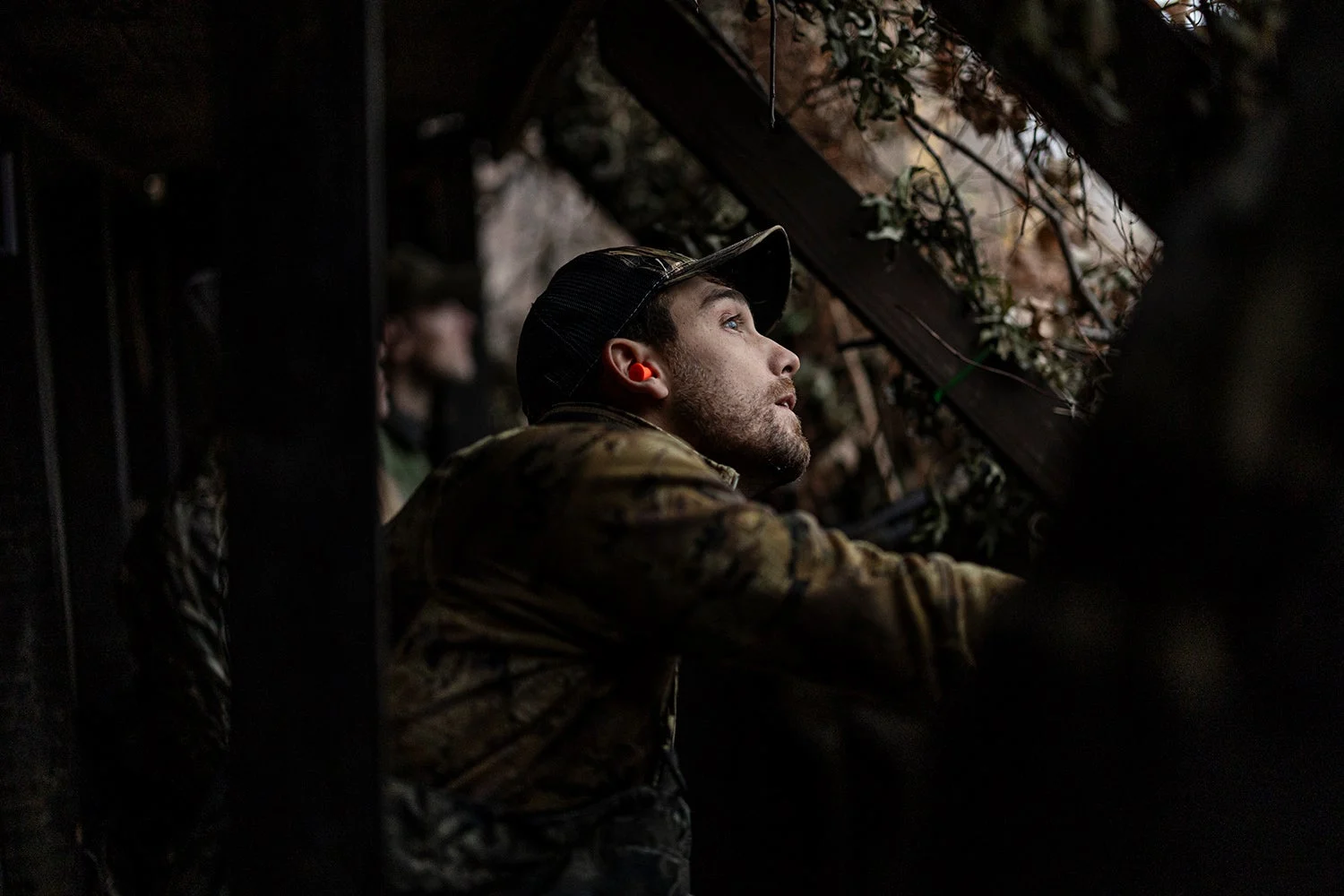
From inside a blind, the author scans the sky for ducks. Nate Stroup / Polaris
That said, we still found success later in the morning. “A lot of people don’t have the ability to hunt every day,” Vandemore says. “They can’t necessarily skip warm bluebird days and wait for better duck-hunting weather to get out. They go when they can. That’s fine. The biggest thing is if you have an opportunity to go hunt, do it. There’s always going to be a few birds kicking around, and you never know what might happen.”
When to Adjust Your Spread
As a novice duck hunter, I haven’t put a ton of thought into setting my decoy spreads. And I don’t have nearly as many decoys to work with as the guides at Habitat Flats. At the blind we hunted, there were dozens of standard floating blocks, at least six spinners, and multiple agitators. All of the electronics were connected to a control board that allowed Rylan to manually control them in response to the ducks. It was a slick setup, but not something a lot of waterfowlers have access to. But according to Vanedmore, you can always improve your setup, whether it’s big or small, fancy or plain.
“You should always be fine-tuning things,” he says. “If the wind changes, you should move your decoys around. If ducks aren’t working, there are two potential reasons. If they come in and flare, it’s because they saw something they didn’t like, so you need to make your hide a little bit better. If they come in and circle a bunch of times, then just go on without flaring, that’s usually a decoy thing. You probably need to adjust decoys to give the ducks more of a landing spot to come in all the way.”
Final Tips for Beginners

You know you’ve had a good morning when the retriever is this tired. Nate Stroup / Polaris
The people who visit Habitat Flats range from diehard waterfowlers to lucky novices like me. Vandemore is not only an incredibly skilled duck hunter himself, but he’s taught a lot of new duck hunters over the years, including his young daughter, Vivian, who killed her first duck shortly before I made the trip to Habitat Flats. I couldn’t leave without asking him about common mistakes beginners make—and how to address them.
“It usually comes down to the basics,” he says. “Make sure you stay hidden and don’t flash your face. Other than that, when it comes time to shoot, you’re better off with one good shot than trying to squeeze three off real fast. Make the first one count, and then worry about the second one.”
It’s also a big advantage to go with someone who knows what they’re doing, he added. “The learning curve for waterfowling is big. Listen to how good hunters call. Ask them advice on why they’re setting decoys like they do. Gain that knowledge and don’t be embarrassed about coming across as not knowing anything. Hell, we’ve all been there. I still learn something new every day.”
_Read more F&S+
stories._

